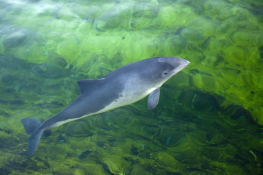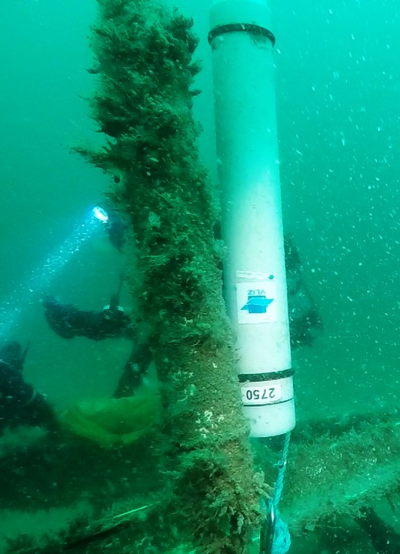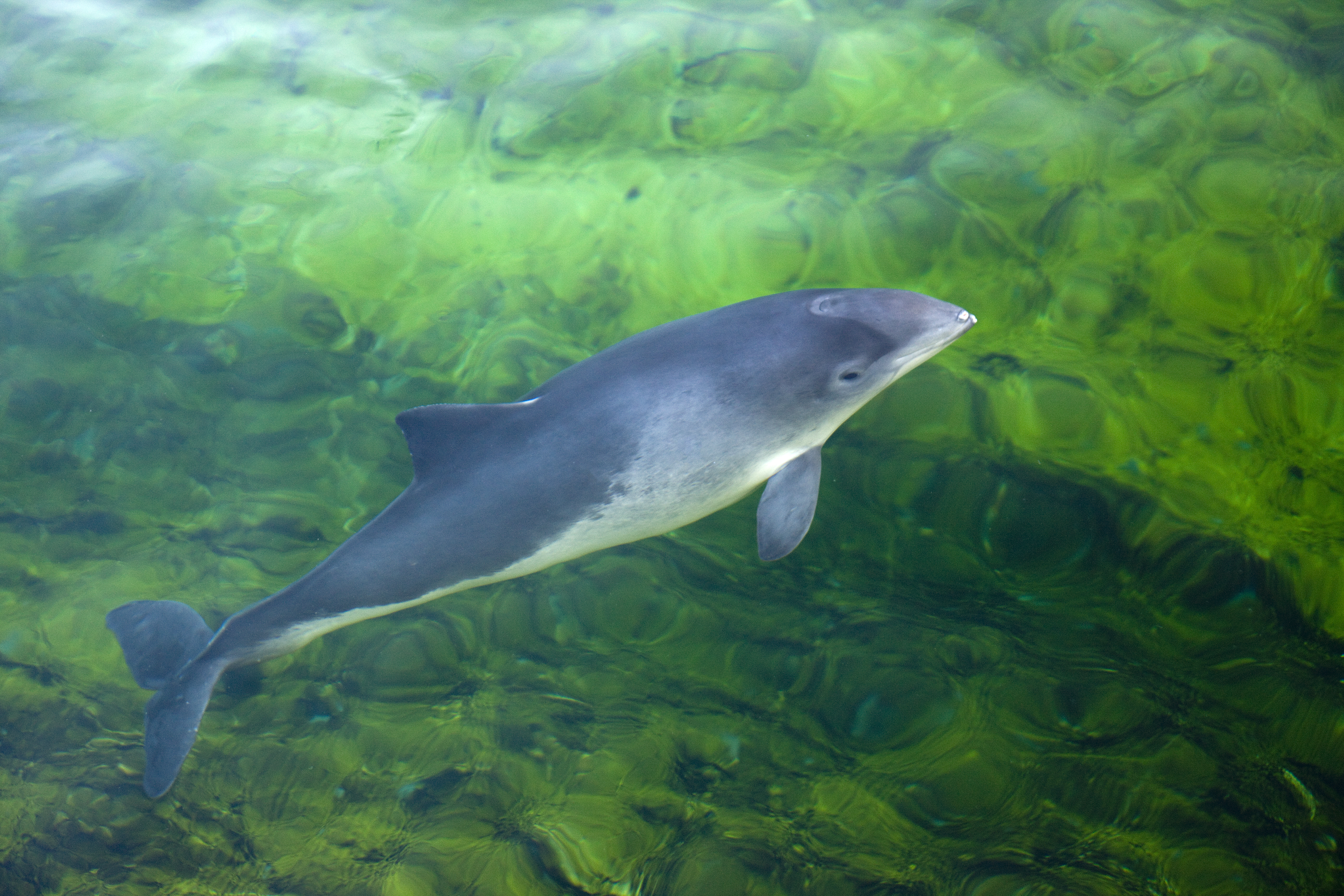New in the Belgian LifeWatch Marine Observatory: Cetacean Passive Acoustic Network
Recently, the Flanders Marine Institute (VLIZ) started with the construction of a permanent Cetacean Passive Acoustic Network in the Belgian Part of the North Sea (BPNS), as part of the Belgian LifeWatch Marine Observatory, to record the presence of harbour porpoises and dolphins.

Porpoises and dolphins (Odontoceti) use echolocation to extract information from their surroundings. Dolphins produce clicks in a wide frequency range and are typically short and loud while porpoises are producing longer and weaker clicks in a narrow frequency range (120 - 145 kHz, mode 132 kHz). These clicks can be recorded by the passive acoustic device, C-POD (Chelonia Limited), when a marine mammal is swimming in the vicinity of the recorder. The C-POD can record clicks between 20 and 160 kHz including ambient background noise, sonar and other biotic underwater sound. The key to the performance of the C-POD is detection and classification of series of clicks, so-called click trains. Click trains have distinctive features which are used by the classification algorithms to identify the occurring cetacean species.
Currently (August 2016) eight C-PODs are attached to buoys or anchored to ship wrecks or to artificial hard structures positioned along an east-west gradient covering coastal, midshore and offshore zones of the BPNS.


Left: C-POD anchored to a ship wreck (©VLIZ) - Right: Harbour porpoise (©Kustfotografie.be/Misjel Decleer)
Currently (August 2016) eight C-PODs are attached to buoys or anchored to ship wrecks or to artificial hard structures positioned along an east-west gradient covering coastal, midshore and offshore zones of the BPNS.


Left: C-POD anchored to a ship wreck (©VLIZ) - Right: Harbour porpoise (©Kustfotografie.be/Misjel Decleer)



